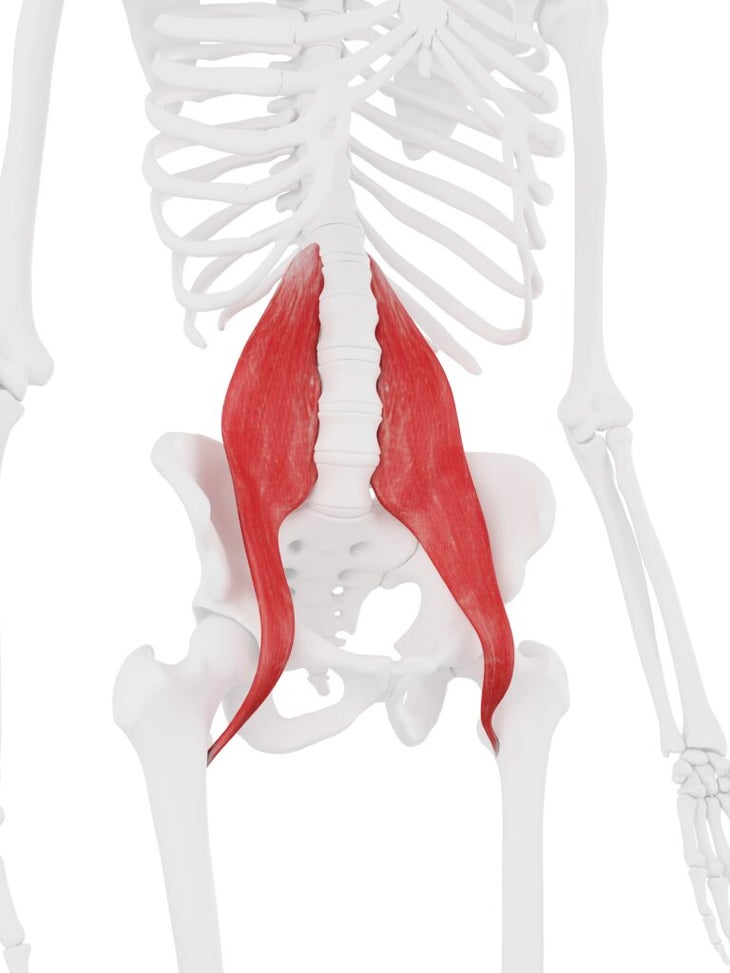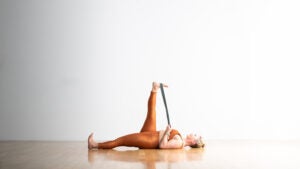Heading out the door? Read this article on the new Outside+ app available now on iOS devices for members! Download the app.
The image of someone in a seated cross-legged position is so strongly linked with yoga and meditation, it’s almost become a cliche. Although it looks like a simple posture, it requires tremendous flexibility, especially in the back, thighs, and hips. Learning how to sit like this can be a gradual process, but practicing other yoga poses that stretch these areas of the body can help.
Why Is It So Hard to Sit Cross-Legged?
Everyone has a different anatomical structure in their hips, which can make sitting cross-legged incredibly challenging for many. The size and angle of our femur and pelvis vary, which dramatically lessens the extent to which some of us can open our hips.
Also, tightness in the inner thighs and hips is common, although sometimes the origins of the tension lies in the deep muscles of the abdomen, such as the psoas. The psoas and hip flexors tighten from overuse, too much sitting, or poor posture. Over time, this make it difficult to come into a seated cross-legged position.

How to Safely Sit Cross-Legged
If you choose to sit cross-legged, it is important to have your knees level with or below your hips. If you are having difficulty maintaining an erect spine while sitting cross-legged, begin by sitting on the edge of a cushion, bolster, or rolled blanket. For additional support, place rolled blankets or bolsters under your knees. (You may find that with the knees supported, the inner thighs relax. When you take the support away, your knees lower more easily.)
But don’t force your body to come into a seated cross-legged position. Instead, try practicing yoga poses that help increase flexibility in your back and hips. With patience and practice, sitting cross-legged can feel more attainable.
Yoga Poses That Prepare You for Sitting Cross-Legged
In the poses that follow, imagine each exhalation releasing through your hips and legs, helping your lower body relax and let go.

1. Standing Poses
Warrior 2 (Virabhadrasana II) and Extended Side Angle Pose (Parsvakonasana) are two standing poses that help prepare you for a seated cross-legged position. They do so by taking the legs away from the body in much the same way as required by Sukhasana.

2. Seated Poses
Poses such as Head-to-Knee Forward Bend (Janu Sirsasana), Bound Angle Pose (Baddha Konasana), and Open Angle Pose (Upavistha Konasana) help increase flexibility in your hips over time. Be careful not to overstretch your lower back or force the pose. Bridge Pose (Setu Bhanda Sarvangasana) and Cobra Pose (Bhujangasana) are good counter poses to take afterward.
Pigeon Pose (Eka Pada Rajakapotasana) is an excellent seated hip opener. Allow yourself to relax into the stretch, letting gravity help you to sink toward the floor with each exhalation rather than trying to hurry the process.

3. Reclining Poses
In Reclining Big Toe Pose (Supta Padangusthasana) (see photo above), take the lifted leg toward the ceiling first and then toward the side, which will stretch your thigh and hip. Reclined Bound Angle Pose (Supta Baddha Konasana) is a resting pose that allows your hips to gradually open as you remain supported on your back with your feet together and knees apart. Put a folded blanket or a bolster under your feet so that your back is resting on the floor.
In both of these poses, allow yourself to relax into the stretch, letting gravity help you to sink into the floor as you exhale.
Alternatives to a Seated Cross-Legged Position
Explore other poses that may be more comfortable. The following options include kneeling or sitting with a deep bend in the knees. If you experience pain in any of them, slowly come out of the pose.
- Thunderbolt Pose (Vajrasana)
- Hero Pose (Virasana)
- Cow Face Pose (Gomukhasana)
You can also meditate sitting on a chair. The chair should be firm, your back straight, and your feet on the floor or supported on a book or cushion.
This article has been updated. Originally published August 28, 2007.